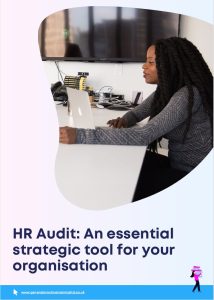Posted on: September 25, 2024

Workplace conflict is nothing new.
We spend a huge chunk of our lives at work, rubbing shoulders with managers and colleagues who have different personal values, beliefs and work ethics to our own.
Throw into the mix a lack of communication, a healthy competition for promotions and a sprinkle of stress and pressure – and it’s no wonder disputes flare up! It’s a normal part of work life.
But, here’s the thing.
Many people struggle with managing conflict and it’s not always their fault.
The idea of addressing an issue or confronting another person can be a major stress trigger, often leading to situations that quickly spiral out of control.
Let’s take a closer look at workplace disputes, shine a light on some of the biggest workplace conflicts and explore techniques to handle them like a pro.
What is conflict at work?
While the dictionary might define conflict as a serious disagreement, argument or clash, it’s hard to pin down a precise definition for workplace conflict. One person’s idea of a ‘tricky situation’, and how they react to it, might be completely different from someone else’s.
Some conflict at work can be positive. For example, using a problem-solving approach that brings varying opinions together to reach a creative solution, when handled well, can be a great thing.
But that’s not always the case. Workplace conflict can happen across a range of behaviours, from low-key differences of opinion or a cross word in the office kitchen about spilt milk, through to serious incidents of bullying and harassment.
The negative impact of conflict at work
When left to fester, conflict at work can be hugely damaging. It can taint a person’s experience of coming to work, seriously damage performance and productivity, create stress, anxiety and an extra workload.
Unchecked, conflict can escalate into formal disciplinary or grievance cases—and potentially go all the way to an employment tribunal.
That’s why it’s crucial to address conflict before it gets out of hand and resolve it quickly.
Why are people worried about tackling conflict?
Conflict resolution can be stressful and daunting. For some, the thought of addressing an issue or confronting someone can be overwhelming. When they do finally pluck up the courage, there’s also the fear of handling it poorly, which could make the situation blow up in everyone’s face.
How to handle conflict at work
The key to managing conflict well is to first recognise what type of conflict is happening, so you can tackle it most appropriately.
Here are the three main workplace conflicts—with some strategies to nip them in the bud before things spiral out of control.
1. Communication breakdown 📢🔌
Misunderstandings, different ways of processing and expressing information or a lack of clear communication, can lead to confusion and disagreements. When communication falters, even small issues can escalate into significant conflicts.
To address this, start by identifying how the breakdown occurred. Pinpoint the root cause, then develop a plan for resolution. Choose the most appropriate communication channel—whether face-to-face, phone or email—and ensure your language is clear, respectful and mindful of tone. Always follow up to confirm that the issue has been fully resolved.
2. Personality clashes 😬💥
Not everyone gets along at work. Different personalities and work styles can sometimes clash, especially when people have wildly different approaches to problem-solving or decision-making.
Understanding the nature of the conflict is crucial. Encourage your team to respect each other’s differences and points of view. Providing emotional intelligence and conflict resolution training can help people see things from another’s perspective. The goal is to find a solution; while they don’t need to be best friends, they do need to work together effectively.
3. Power struggles 💼🔥
These types of struggles often stem from battles over authority, control or influence – especially if there is a lack of clarity in leadership roles. While competition for power is natural in business, it doesn’t have to be destructive.
To address this, establish a clear organisational structure with well-defined roles and responsibilities. Foster teamwork and collaboration and offer development opportunities to channel competitive energy in a positive direction.
Conflict at work is inevitable, but as a business owner that doesn’t mean you have to accept it. While dispute resolution can be daunting, identifying the type of conflict and addressing its underlying causes through effective communication, clear role definitions and conflict resolution strategies can help to create a more collaborative—and conflict-free—environment.
Worried about a conflict brewing in your business? Need a confidential chat to discuss this further?
Please get in touch with us at [email protected] we’re always happy to help!
 December 2024 Educational Guide: Organisational Design
December 2024 Educational Guide: Organisational Design  November 2024 Educational Guide: HR Audit
November 2024 Educational Guide: HR Audit  October 2024 Educational Guide: Employer Branding
October 2024 Educational Guide: Employer Branding  Summary of Employment Rights Bill
Summary of Employment Rights Bill  Paternity Leave Flowchart – Birth
Paternity Leave Flowchart – Birth  Without Prejudice & Protected Conversations Flowchart
Without Prejudice & Protected Conversations Flowchart  December 2024 HR Newsletter
December 2024 HR Newsletter  November 2024 HR Newsletter
November 2024 HR Newsletter  October 2024 HR Newsletter
October 2024 HR Newsletter